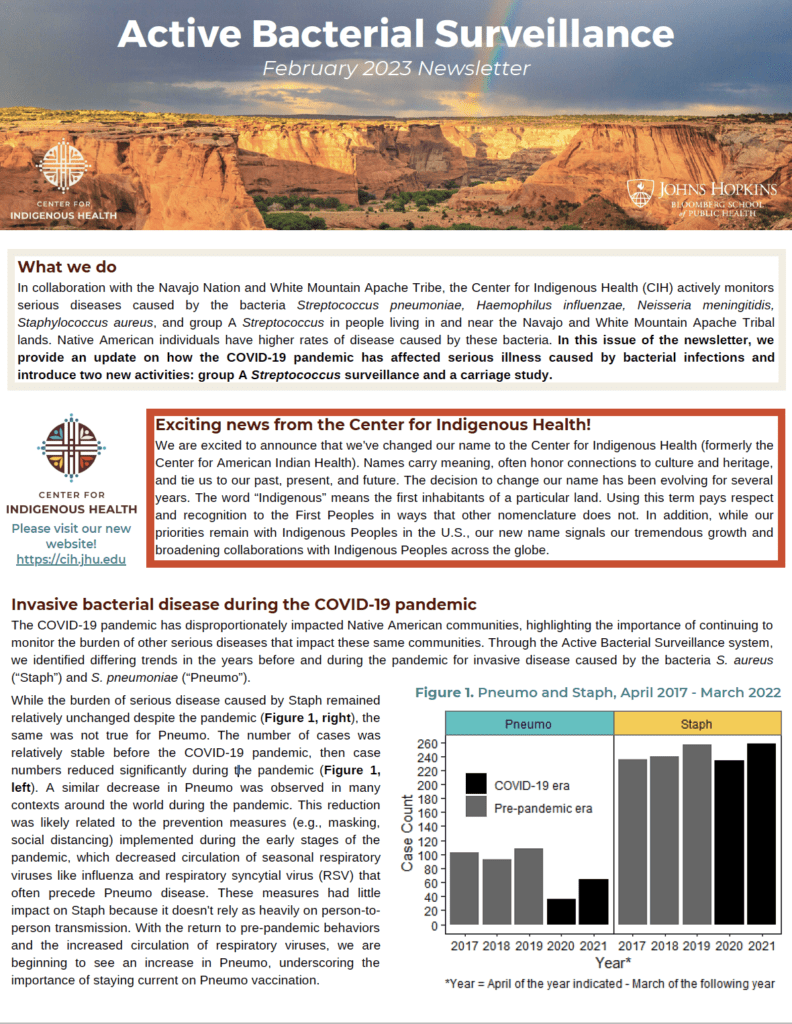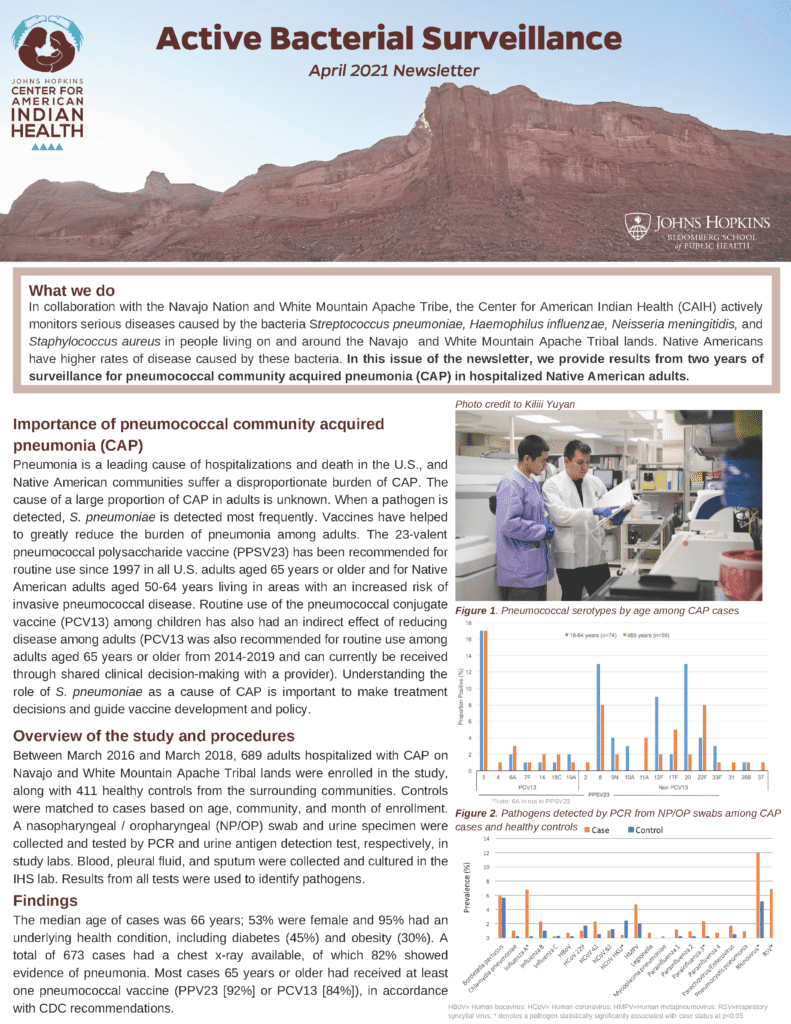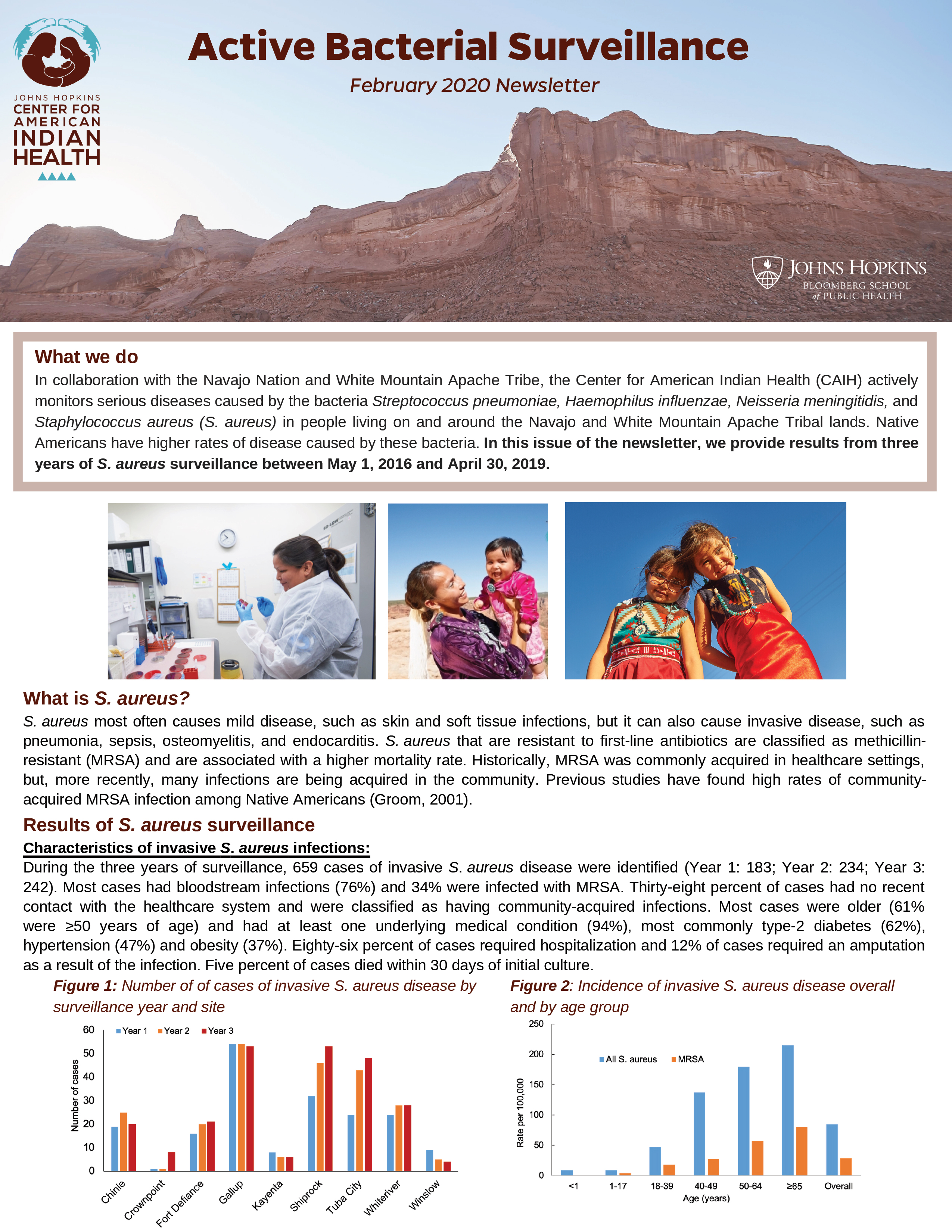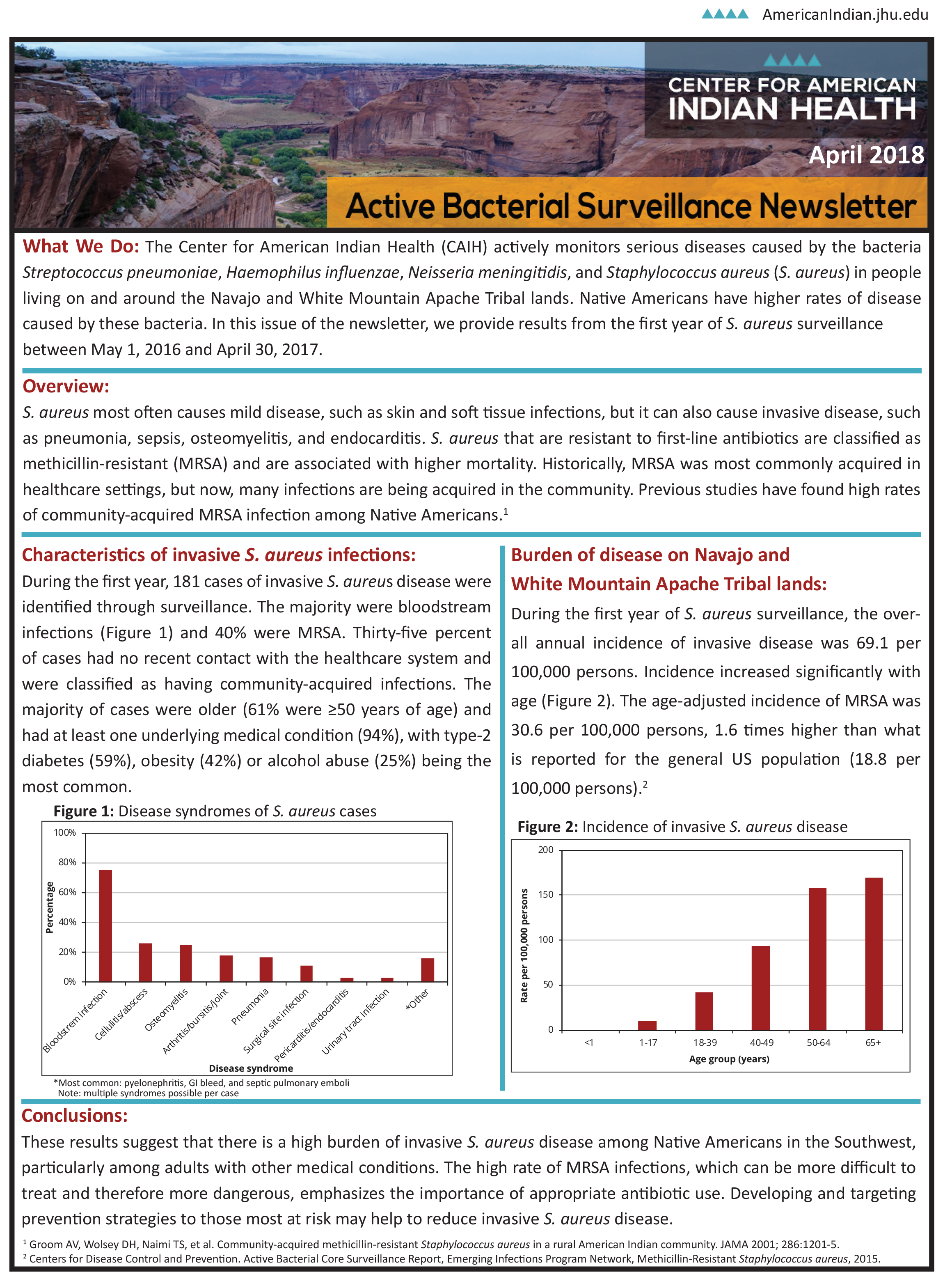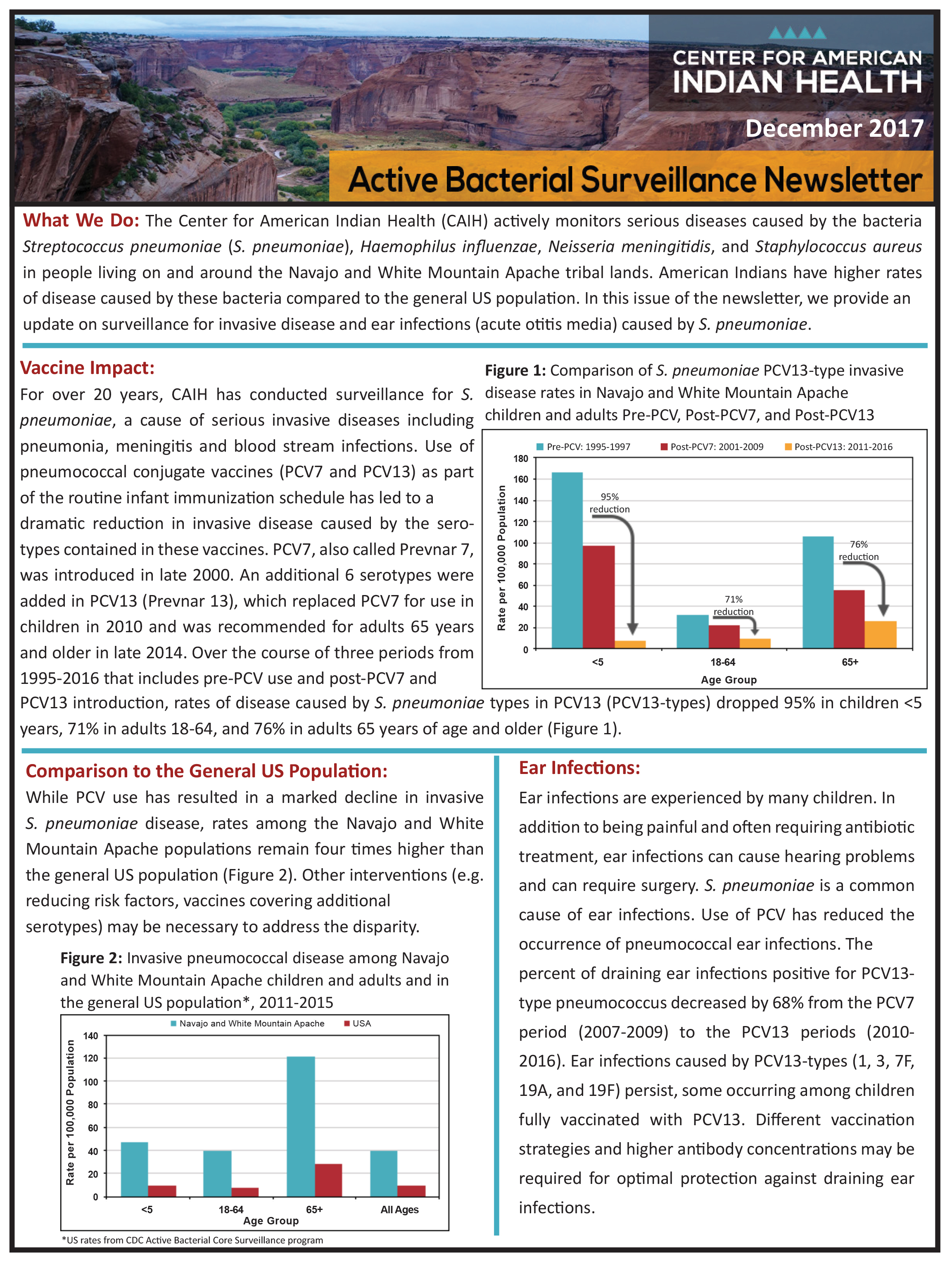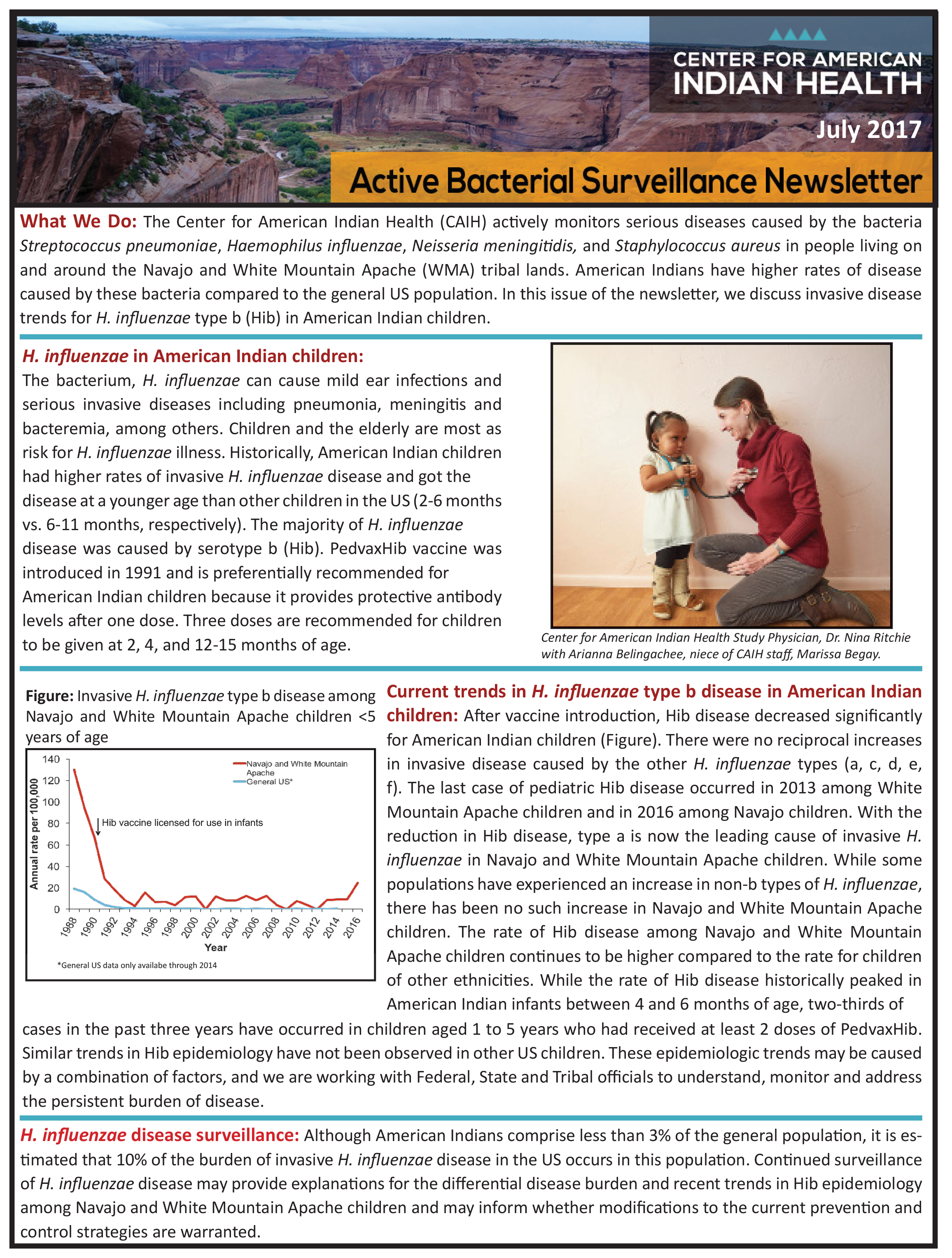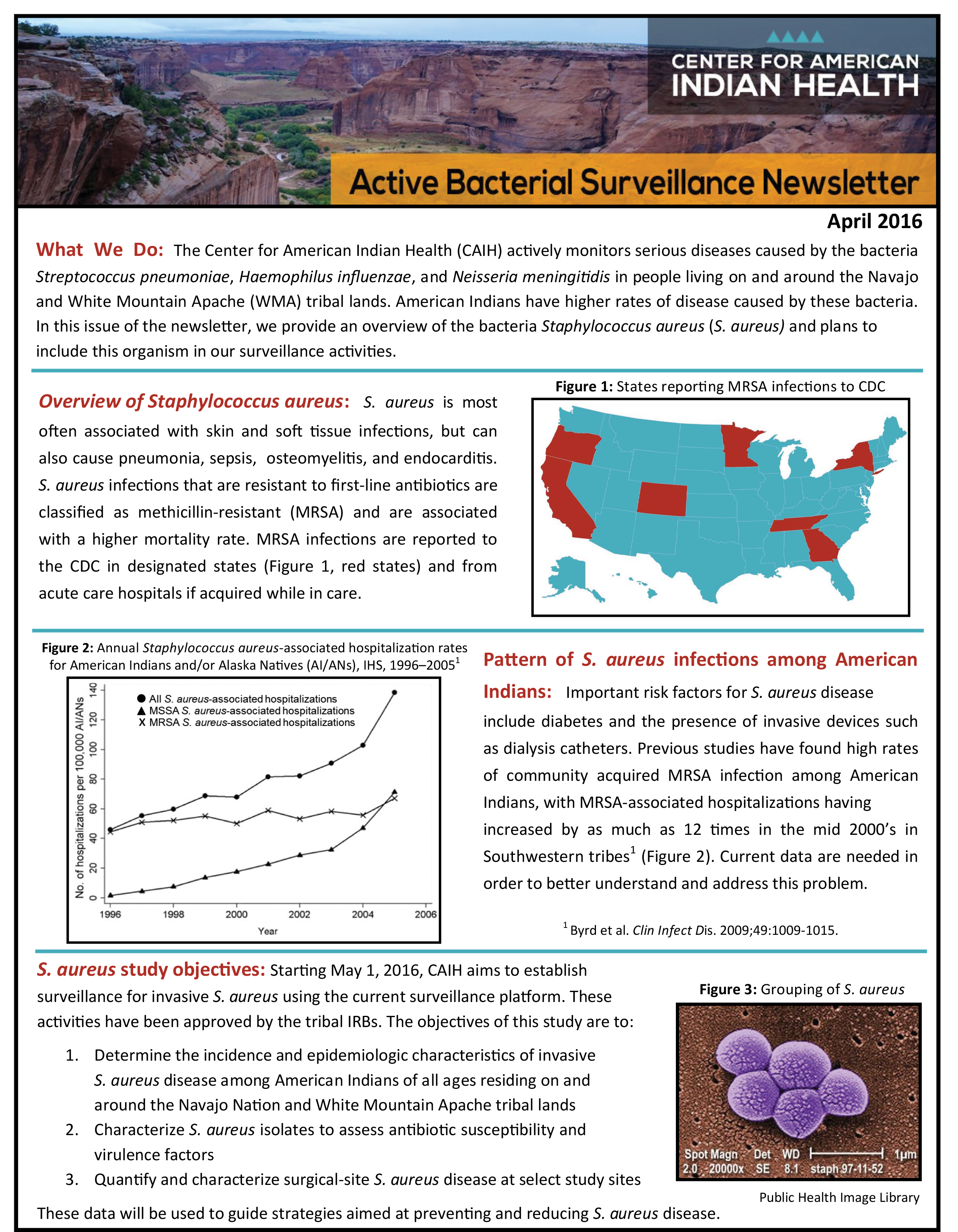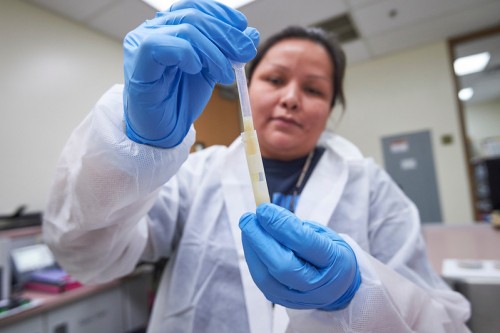
For more than 20 years, we have helped tribes quantify the burden of serious disease caused by bacteria and monitor the impact of intervention strategies.
**Sign up for our Active Bacterial Surveillance Newsletter**
Public health surveillance is the continuous, systematic collection, analysis and interpretation of health-related data needed for the planning, implementation, and evaluation of public health practice. The Johns Hopkins Center for American Indian Health Active Bacterial Surveillance System measures how much disease occurs in the Navajo and White Mountain Apache populations, helping researchers and health officials to:
- Develop and improve treatment and prevention activities
- Recognize disease outbreaks
- Know if a prevention program is working
Our disease surveillance focuses on diseases that are of high concern to Native Americans. Working with over 20 hospitals and laboratories that serve on the Navajo Nation and White Mountain Apache Tribal lands, we monitor invasive diseases caused by the following bacteria:
- Haemophilus influenzae
- Streptococcus pneumoniae
- Neisseria meningitidis
- Staphylococcus aureus
- Group A Streptococcus (White Mountain Apache only)
Over two decades of surveillance: Johns Hopkins researchers working on the White Mountain Apache Tribal lands in the early 1980s observed high rates of bacterial infections. As a result, the Johns Hopkins Center for American Indian Health established a surveillance system to monitor how many people on the Navajo Nation and White Mountain Apache Tribal lands get sick from certain infections.
Our disease surveillance activities are conducted with partnering microbiology laboratories at Indian Health Service and private facilities across the Tribal lands. When a case is identified, a medical chart review is conducted to gather more information on the disease event, patient demographics, vaccination history, hospitalization, and underlying medical conditions. Our surveillance system is modeled on the one used by the Centers for Disease Control and Prevention (CDC). The structural and methodological consistencies between the two surveillance systems allows for comparison of disease rates between Native American and general US populations.
Findings include:
- Use of Haemophilus influenzae type b vaccine (i.e., Hib vaccine) has resulted in the near elimination of invasive Hib disease in Navajo and White Mountain Apache children.
- The pediatric vaccine against Streptococcus pneumoniae (i.e., Prevnar) is highly effective in protecting children from invasive pneumococcal diseases caused by strains of Streptococcus pneumoniae targeted by the vaccine.
- Vaccinating children with Prevnar also protects unvaccinated members of the population (i.e., herd immunity). This is because vaccinated children no longer transmit the pneumococcal bacteria to others.
- Despite the gains achieved through vaccination, Navajo and White Mountain Apache children and adults continue to have high rates of disease caused by strains of Streptococcus pneumoniae not targeted by the vaccine.
- Navajo and White Mountain Apache communities have high rates of disease caused by Staphylococcus aureus, including methicillin-resistant S. aureus (MRSA).
Results of our surveillance system
The data collected by the disease surveillance system have both local and global public health importance. These data have been used to track disease trends over time, measure the impact of disease prevention strategies such as vaccines, and inform the development of new vaccines that appropriate to prevent types of disease experienced by Native Americans.
Results of Staph aureus surveillance (one-pager)
Results of Staph aureus surveillance (slides)
Our center is working to help understand the risk factors for these diseases and to evaluate new interventions that could reduce the burden of disease.
Surveillance for serious bacterial disease PPT presentation.
